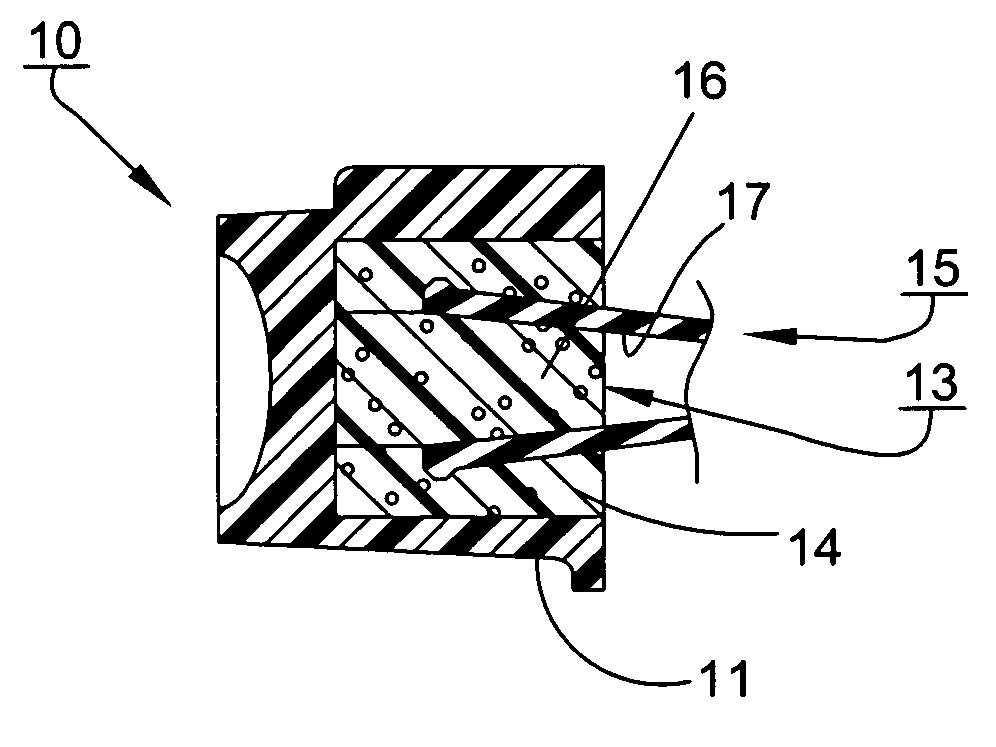Method of removing a biofilm from a surface
a biofilm and surface technology, applied in the field of biofilm removal, can solve the problems of ineffective diagnosis and treatment strategies used to fight acute infections, chronic biofilm diseases, and most serious and costly healthcare-associated infections, and achieve the effects of low porosity, high porosity, and improved anti-infection performan
- Summary
- Abstract
- Description
- Claims
- Application Information
AI Technical Summary
Benefits of technology
Problems solved by technology
Method used
Image
Examples
Embodiment Construction
[0028]Referring to FIG. 1, the scrub brush 10 is constructed in a manner as described in U.S. Pat. No. 8,065,733, which is incorporated by reference herein.
[0029]Referring to FIG. 2, the scrub brush 10 includes a housing 11 that defines a cavity 12, a swab 13 of foam material disposed in the cavity 12 and an anti-bacterial disinfectant in the swab 13.
[0030]The swab 13 includes an annular portion 14 for enveloping an outer surface of a female luer 15 (see FIG. 3) and a central portion 16 within the annular portion 14 for insertion within a central passage 17 of the female luer 15.
[0031]The swab 13 is a substrate characterized in having a roughness sufficient to scrape a biofilm on a surface and a plurality of cavities (pores) for capturing scrapings of biofilm therein. By way of example, the foam material may be a low to medium to density foam having a density of up to 5 pounds per cubic foot with an average core size of 0.013 inch.
[0032]The antibacterial disinfectant which is employ...
PUM
 Login to view more
Login to view more Abstract
Description
Claims
Application Information
 Login to view more
Login to view more - R&D Engineer
- R&D Manager
- IP Professional
- Industry Leading Data Capabilities
- Powerful AI technology
- Patent DNA Extraction
Browse by: Latest US Patents, China's latest patents, Technical Efficacy Thesaurus, Application Domain, Technology Topic.
© 2024 PatSnap. All rights reserved.Legal|Privacy policy|Modern Slavery Act Transparency Statement|Sitemap


